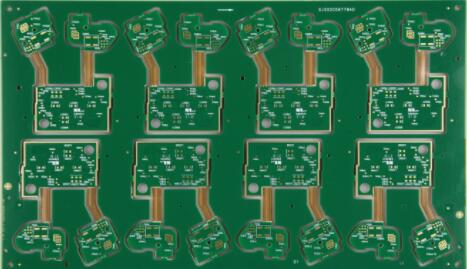1. The birth and development of FPC and PCB have given birth to the new product of automotive rigid-flex board. Therefore, the rigid-flex board is a circuit board with FPC characteristics and PCB characteristics by combining the flexible circuit board and the rigid circuit board after pressing and other processes in accordance with the relevant process requirements in PCB proofing.
In PCB proofing, the rigid-flex board provides the best solution for limited space conditions. This technology provides the possibility of safely connecting device components while ensuring polarity and contact stability, and reduces the number of plugs and connector components.
The other advantages of the rigid-flex board are dynamic and mechanical stability, the resulting 3D design freedom, simplified installation, space saving, and maintenance of uniform electrical characteristics.
Rigid-flex boards are relatively expensive, but they are extremely versatile and can be tailored for applications in many industries. There are several situations that make the rigid-flex board the best solution. These include:
1. High impact and high vibration environment. The rigid-flex board has high impact resistance and can survive in a high-stress environment, otherwise it will cause equipment failure.
2. High-precision applications where reliability is more important than cost considerations. If a cable or connector failure is dangerous, it is best to use a more durable flexible and hard board.
3. High-density applications: Some components lack all the necessary connectors and the required surface area for cables. The rigid-flex board can save space to solve this problem.
4. Applications that require multiple rigid boards. When the assembly is packed with more than four connection boards, replacing them with a single rigid-flex board may be the best choice and more cost-effective.
In PCB proofing, the automotive soft-hard board is a special process, with certain technical thresholds and operating difficulties, high cost, high error rate and high loss rate. Some PCB manufacturers usually don't want to do it or rarely do it when facing such orders. PCB Rigid and Rigid Board Factory has been committed to the sales and production of Rigid and Rigid Boards,HDI, FPC, PCB for 19 years, and providing customers with high-quality services is our aim.

2. Measures to reduce leakage current mainly include:
In terms of PCB board design, when designing circuit boards, especially sensitive circuits with high precision and high gain. The designer should consider the influence of the change of insulation resistance on the electrical performance, and simulation should be carried out before wiring. When possible, make sure to increase the distance between these traces and other traces as much as possible.
In terms of application and test environment, if the circuit is working under high temperature conditions, the influence of the deterioration of the insulation resistance must be considered, and the spacing between the lines should be increased as much as possible, so that the time required for ions to migrate from one pole to the other pole is increased. Big. Make sure that the circuit board works under lower humidity conditions as much as possible, but also pay attention to static electricity issues.
Regarding the surface coating of the printed board, when strengthening the PCB board components, if there are printed lines on the printed board below, GF-2 glue should be used to reinforce it with caution. If the circuit works under high-voltage conditions, the distance between the points of the high-voltage electrical must be increased as much as possible, or the method of sealing insulating glue must be used to improve the insulation between the high-voltage electrical points.
After the circuit board is soldered, it must be thoroughly cleaned. The equipment can be cleaned with special water to ensure that the cleaning work goes deep into all corners of the PCB board, and then the ion concentration of the liquid is tested to ensure that the cleaning effect can be quantified and controllable. If the flux cannot be completely cleaned, it is recommended to use no-clean flux when soldering.